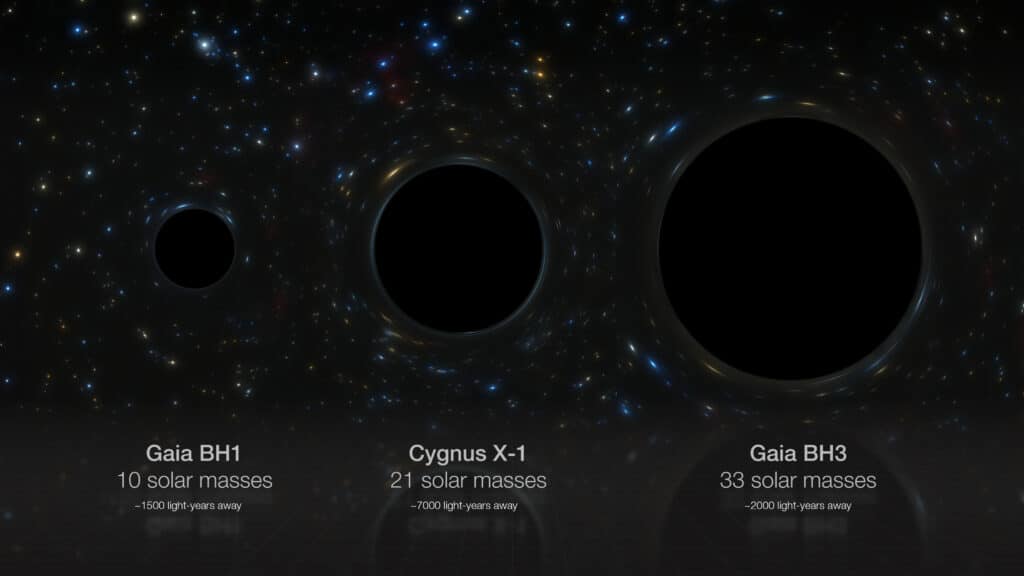
20 Apr, 2024 by Editorial Team
Collected at : https://www.techexplorist.com/astronomers-discover-most-massive-stellar-black-hole-in-our-galaxy/83035/
A discovery by astronomers from the European Space Agency’s Gaia mission has revealed the most massive stellar black hole ever found in the Milky Way galaxy. The black hole, named Gaia BH3 or BH3 for short, weighs an impressive 33 times that of the Sun. The discovery was made when astronomers observed an ‘odd wobbling’ motion on the companion star orbiting the black hole.
The previously identified black holes in the Milky Way were about ten times as massive as the Sun on average. Even the next most massive stellar black hole known in our galaxy, Cygnus X-1, only reaches 21 solar masses, making this new 33-solar-mass observation exceptional.
Remarkably, the black hole is also extremely close to us, at a mere 2000 light-years away in the constellation Aquila. It is the second-closest known black hole to Earth. Astronomers discovered the black hole while reviewing Gaia observations in preparation for an upcoming data release.
To confirm their discovery, the Gaia collaboration used data from ground-based observatories, including the Ultraviolet and Visual Echelle Spectrograph (UVES) instrument on ESO’s VLT, located in Chile’s Atacama Desert. These observations revealed key properties of the companion star, which, together with Gaia data, allowed astronomers to measure the mass of BH3 precisely.

The research study, led by Pasquale Panuzzo from the National Centre for Scientific Research (CNRS) at the Observatoire de Paris – PSL, France, is published today in Astronomy & Astrophysics. “No one was expecting to find a high-mass black hole lurking nearby, undetected so far,” says Panuzzo.
Further observations of this system could reveal more about its history and about the black hole itself. For example, the GRAVITY instrument on ESO’s VLT Interferometer could help astronomers find out whether this black hole is pulling in matter from its surroundings and better understand this exciting object.
The discovery of Gaia BH3 has provided crucial evidence linking metal-poor stars to high-mass black holes, which was lacking until now. Making the data available early will let other astronomers start studying this black hole right now without waiting for the full data release, which is planned for late 2025 at the earliest.
Journal Reference
- P. Panuzzo et al. Discovery of a dormant 33 solar-mass black hole in pre-release Gaia astrometry. Astronomy & Astrophysics. DOI: 10.1051/0004-6361/202449763

Leave a Reply